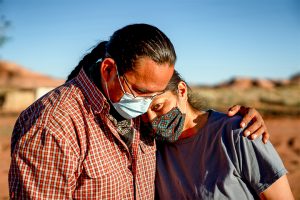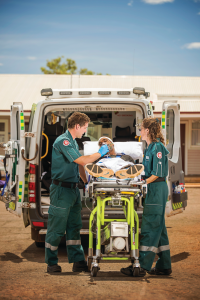These presentations offer a view of the historical depth of global health concerns through interactive and media-rich narrative timelines. These beautifully crafted pages marry rigorous historical analysis with interactive storytelling, investing pressing concerns in healthcare today with depth and substance. The visual series inherent to the timeline format is enriched with a multitude of media, including photographs, videos, and even interviews conducted by the students. The intersection of historical analysis and novel presentation locate these pages as distinctive and original contributions to our historical understanding of medicine’s present.
Vaccine Choice in the Age of COVID-19
It is this very nature of vaccines being a magic bullet, created with new technologies and a rapid development pace, that have vaccine choice groups concerned. Members of these groups are worried about how safety can be ensured with such a short development time. Medical experts say that the highest standards of safety are being followed for vaccine development. Still, only time will tell if the vaccines are truly safe.
Emergency Medical Services: A Work in Progress
In order to understand the current patchwork nature of the US EMS system, it is necessary to examine the origins of EMS and how the field has developed and evolved over time in order to reach its current state Through its oral history component, this project illuminates the EMS system through the experiences and viewpoints of those who have learned the intricacies of the field and seen it develop over numerous years of service, and in doing so, it provides the readers with hope that the necessary reforms can occur which will better the system for every citizen and every prospective provider.
Caring for Those Who Risk Their Lives for Us: U.S. War Veterans and PTSD
 How we, as a nation, care for veterans suffering from PTSD is codified in larger ideas of what health is and what health care ought to include. The care that veterans receive is shaped by not only the study of medicine, but also by politics, social ideals, and economic principles. Through ethnographies and analysis of primary and secondary sources, our timeline adopts a “historically deep and geographically broad” (Farmer) lens to explore the key moments in history that most dramatically shaped how combat-related PTSD is understood, diagnosed, and treated in American society today.
How we, as a nation, care for veterans suffering from PTSD is codified in larger ideas of what health is and what health care ought to include. The care that veterans receive is shaped by not only the study of medicine, but also by politics, social ideals, and economic principles. Through ethnographies and analysis of primary and secondary sources, our timeline adopts a “historically deep and geographically broad” (Farmer) lens to explore the key moments in history that most dramatically shaped how combat-related PTSD is understood, diagnosed, and treated in American society today.
Locked Up and Tied Up: A History of Eugenics and Sterilization in the US Carceral System
 This timeline tracks eugenics from its introduction in Francis Galton’s work in the 19th century to the present in order to disrupt the misconception that eugenics is a thing of the past. By paying special attention to how eugenics continues to shape the U.S prison system, this project exposes how eugenics pathologize bodies by labeling them deviant, and, thus, subjects to be controlled.
This timeline tracks eugenics from its introduction in Francis Galton’s work in the 19th century to the present in order to disrupt the misconception that eugenics is a thing of the past. By paying special attention to how eugenics continues to shape the U.S prison system, this project exposes how eugenics pathologize bodies by labeling them deviant, and, thus, subjects to be controlled.
 When, and why, reproductive rights have become so politicized. The aim of our final project, therefore, is to explore the history of reproductive rights in the United States through an interactive timeline. Questions our project hopes to answer include what are reproductive rights, how has the definition of reproductive rights changed over time, and what have national policies been in response to these changing definitions?
When, and why, reproductive rights have become so politicized. The aim of our final project, therefore, is to explore the history of reproductive rights in the United States through an interactive timeline. Questions our project hopes to answer include what are reproductive rights, how has the definition of reproductive rights changed over time, and what have national policies been in response to these changing definitions?
Violence in Healthcare–A History of Native American Public Health in the Southwest
 This project is a timeline of Native American public health in the U.S. Southwest. Starting with the Mexican-American war, we follow how the United States government clashed with Native American indigenous populations over territorial claims. Following the violent colonization of the Native American lands, the U.S. government attempted to break up and assimilate Native American populations through detrimental policies which negatively affected the health and wellbeing of Native American communities and individuals.
This project is a timeline of Native American public health in the U.S. Southwest. Starting with the Mexican-American war, we follow how the United States government clashed with Native American indigenous populations over territorial claims. Following the violent colonization of the Native American lands, the U.S. government attempted to break up and assimilate Native American populations through detrimental policies which negatively affected the health and wellbeing of Native American communities and individuals.

